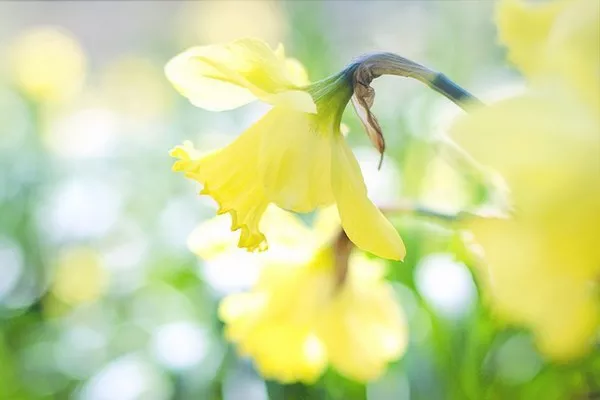Mini daffodils, with their vibrant hues and delicate blooms, bring a burst of springtime joy to gardens and landscapes. Once these charming flowers have completed their flowering cycle, it’s essential to provide proper care to ensure their continued health and beauty. In this article, we will explore the steps and considerations for post-flowering care of mini daffodils, helping gardeners maximize the longevity and vigor of these petite wonders.
Deadheading and Pruning:
One of the first tasks after mini daffodils have finished flowering is deadheading. Deadheading involves removing the spent blooms before they go to seed. This not only enhances the plant’s appearance but also redirects energy back into the bulb for the next growing season. Use clean, sharp scissors or pruning shears to snip off the faded flowers, making sure not to damage the foliage.
While deadheading, it’s important to avoid cutting back the leaves. Daffodil leaves play a crucial role in the plant’s ability to photosynthesize and store energy in the bulb. Allow the foliage to naturally wither and turn yellow before removing it. This process typically takes about six weeks, during which the plant is absorbing sunlight and replenishing the bulb for future growth.
Fertilizing:
After flowering, mini daffodils benefit from a balanced fertilizer application to support their post-bloom recovery and prepare for the next season. Choose a fertilizer with a formulation such as 10-10-10, ensuring a well-rounded supply of essential nutrients. Apply the fertilizer according to the package instructions, typically in late spring.
Avoid over-fertilizing, as excessive nutrients can lead to imbalances and potential harm to the bulbs. A slow-release fertilizer or a liquid fertilizer diluted to half-strength is generally recommended for mini daffodils. This will provide a gradual release of nutrients, sustaining the plant’s growth without causing stress.
Watering:
Proper watering is crucial during the post-flowering period, as mini daffodils need to recover and replenish moisture lost during the blooming phase. Ensure that the soil remains consistently moist but not waterlogged. While daffodils are generally resilient, they can suffer from rot if exposed to excessive moisture.
Monitor the weather conditions and adjust your watering schedule accordingly. During dry spells, provide supplemental water to prevent the soil from drying out completely. On the other hand, in periods of heavy rain, ensure proper drainage to prevent waterlogged soil.
Bulb Division and Transplanting:
Mini daffodil bulbs tend to multiply and clump together over time, which can lead to overcrowding. To maintain healthy plants and encourage continuous blooming, consider dividing and transplanting the bulbs every three to five years. Late spring or early summer is an ideal time for this process, once the foliage has withered.
Carefully dig up the clumps of bulbs, taking care not to damage them. Gently separate the bulbs, discarding any diseased or damaged ones. Replant the bulbs at the appropriate depth, typically three times their height, and in well-draining soil. This rejuvenation process not only ensures optimal spacing but also promotes improved air circulation around the bulbs.
Pest and Disease Management:
Mini daffodils are generally resistant to most pests and diseases, but it’s essential to remain vigilant to maintain their health. Inspect the plants regularly for signs of pests like aphids or diseases such as bulb rot. If detected, take prompt action to mitigate the issue.
Organic insecticidal soap or neem oil can effectively address common pests without harming the environment or beneficial insects. For fungal diseases, proper spacing, well-draining soil, and good air circulation are preventive measures. Remove and destroy any affected plant material to prevent the spread of diseases.
see also What Is February Birth Flower
Conclusion:
Caring for mini daffodils after flowering is a crucial aspect of maintaining these delightful spring-blooming flowers. By following these post-flowering care guidelines, gardeners can ensure the long-term health and vitality of their mini daffodils, enjoying their beauty year after year. From deadheading and pruning to fertilizing and pest management, a proactive approach to care will reward gardeners with a vibrant and thriving display of mini daffodils season after season.


